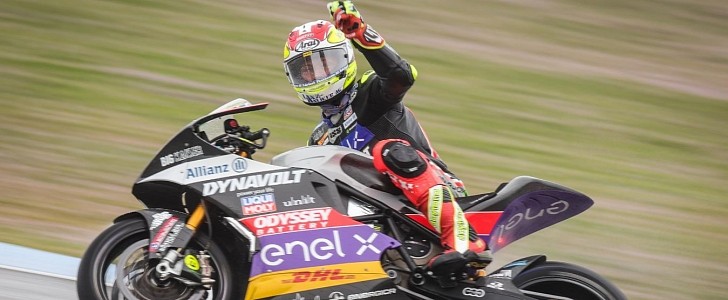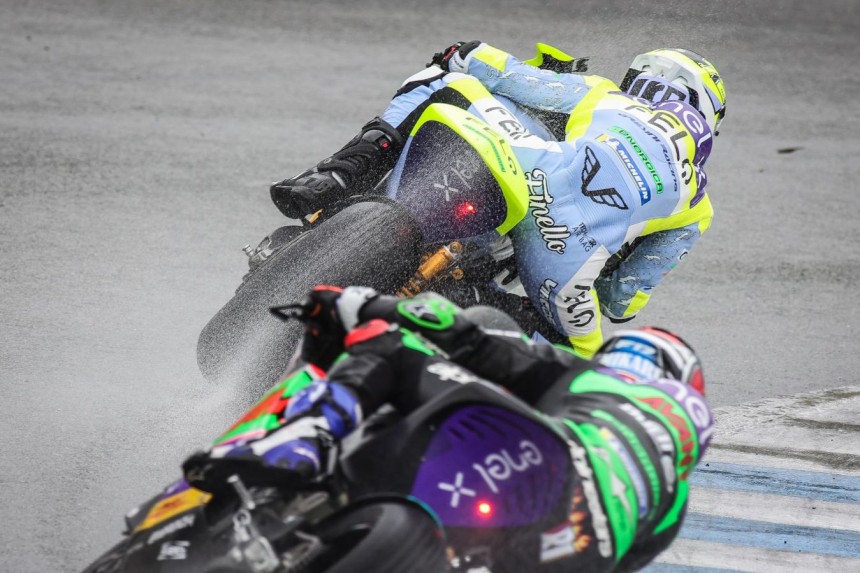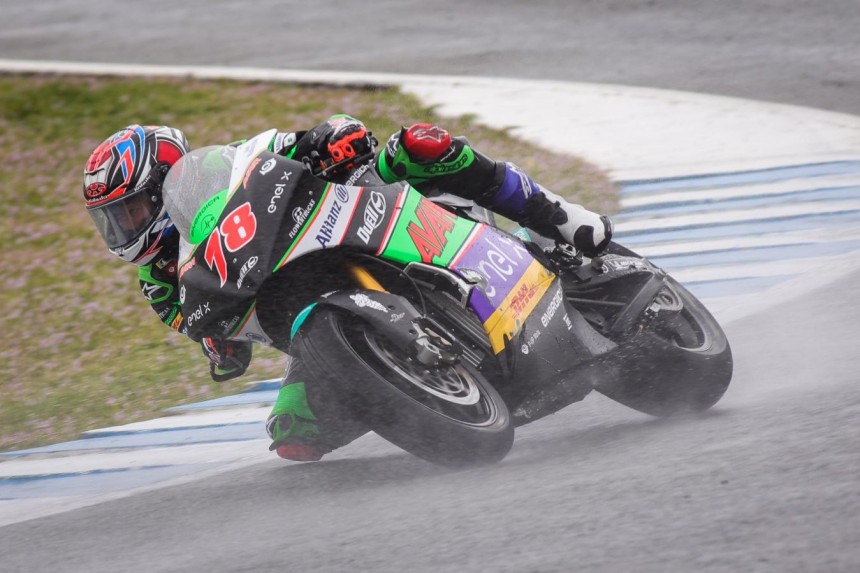The fourth season of the MotoE World Cup electric motorcycles racing series will begin in about one month. Some people say that MotoE is the future of motorcycle racing, but from 2024 the MotoGP series will use some new types of fuels that are more environmentally friendly.
Before we can talk about the future, we need to look at the past and understand how MotoE appeared, and the idea behind it. On 6 February 2018, Dorna Sports (which is the commercial rights holder for the MotoGP Championship) announced their intention to stage an all-electric bike racing competition.
This decision came only four years after the inauguration of the Formula E series. However, Formula E grew big because it’s carving its own niche, away from Formula One. The races in Formula E are taking place in city centers such as Rome, London, New York, Berlin, etc.- which encourages a whole new audience.
The creation of the FIM (Fédération Internationale de Motocyclisme) MotoE World Cup immediately attracted a title sponsor in Enel, an Italian multinational manufacturer and distributor of electricity and gas. At the same time, Italian bike constructor Energica secured a deal to supply the series until 2022, with Ducati expected to take their place as the new sole manufacturer starting next year.
What remains the same is the tire supplier. Michelin announced their partnership with MotoE World Cup would continue. The French tire manufacturer has been a partner of MotoE since its debut in 2019, playing a crucial role in the creation of the Cup’s identity as a fast, competitive and exciting motorcycle competition.
By November 2018, testing for MotoE had already begun, with several former MotoGP race winners and Moto2 World Champions participating. For the inaugural season in 2019, the officials announced a six-race calendar at five of the European circuits.
However, a significant fire at the final pre-season test on 16 March 2019, involving rechargeable batteries, destroyed the special facility and the series' motorcycles at the Circuit of Jerez in Spain. As a result, a revised schedule was revealed in the following days, with races at Le Mans and Jerez being dropped.
Energica did a great job and managed to build eighteen new race bikes before the start of June. After some final tests, the MotoE series was ready to compete at the inaugural race in Germany. Italian rider Matteo Ferrari won the first-ever season for the Trentino Gresini Moto E Team. Spanish rider Jordi Torres won the next two championships for Pons Racing 40 team.
From a technical standpoint, these bikes use synchronous oil-cooled AC with a permanent magnets motor that produces 120 kWh (160 hp).As a result, these electric motorcycles can do 0-100 kph (62 mph) in about three seconds, with a top speed of 270 kph (168 mph) and a torque of 200 Nm (147.5 ft-lb) at 5,000 rpm. As far as the battery goes, they are using a high-voltage lithium-ion that can recharge from 0 to 85 in about 20 minutes via the integrated DC fast charging technology.
Now, we know that the climate crisis is making many headlines in our days. The motorsport world needs to take action in this effort too. For example, Formula One was already using a small percentage of bio-waste in their fuel. In 2022, they will use an E10 combustible, which includes 10% ethanol produced from the fermentation of plants. The FIM is now looking at carbon-neutral fuels for its three internal-combustion categories. Before moving into the premier class, these could arrive in Moto2 and Moto3 within the next three years.
“We are establishing a working group with all the manufacturers,” says MotoGP technical director Danny Aldridge. “We will work with them and with the fuel companies, who are the experts here, to see what’s the best way forward. This is with the blessing of the manufacturers, because they want this to happen. So we have to agree a spec for the fuel, test the fuel and then take it to the track. It makes sense to start with the lower categories, partly because they run spec fuels. The very earliest that will happen is 2024."
Even if carbon-neutral fuel will be more simpler, achievable and quicker, MotoE is growing the same way Formula E did, by creating it's own niche. The fanbase is getting bigger and bigger, plus more top tier riders are attracted by electric motorcycle racing.
This decision came only four years after the inauguration of the Formula E series. However, Formula E grew big because it’s carving its own niche, away from Formula One. The races in Formula E are taking place in city centers such as Rome, London, New York, Berlin, etc.- which encourages a whole new audience.
The creation of the FIM (Fédération Internationale de Motocyclisme) MotoE World Cup immediately attracted a title sponsor in Enel, an Italian multinational manufacturer and distributor of electricity and gas. At the same time, Italian bike constructor Energica secured a deal to supply the series until 2022, with Ducati expected to take their place as the new sole manufacturer starting next year.
What remains the same is the tire supplier. Michelin announced their partnership with MotoE World Cup would continue. The French tire manufacturer has been a partner of MotoE since its debut in 2019, playing a crucial role in the creation of the Cup’s identity as a fast, competitive and exciting motorcycle competition.
However, a significant fire at the final pre-season test on 16 March 2019, involving rechargeable batteries, destroyed the special facility and the series' motorcycles at the Circuit of Jerez in Spain. As a result, a revised schedule was revealed in the following days, with races at Le Mans and Jerez being dropped.
Energica did a great job and managed to build eighteen new race bikes before the start of June. After some final tests, the MotoE series was ready to compete at the inaugural race in Germany. Italian rider Matteo Ferrari won the first-ever season for the Trentino Gresini Moto E Team. Spanish rider Jordi Torres won the next two championships for Pons Racing 40 team.
From a technical standpoint, these bikes use synchronous oil-cooled AC with a permanent magnets motor that produces 120 kWh (160 hp).As a result, these electric motorcycles can do 0-100 kph (62 mph) in about three seconds, with a top speed of 270 kph (168 mph) and a torque of 200 Nm (147.5 ft-lb) at 5,000 rpm. As far as the battery goes, they are using a high-voltage lithium-ion that can recharge from 0 to 85 in about 20 minutes via the integrated DC fast charging technology.
“We are establishing a working group with all the manufacturers,” says MotoGP technical director Danny Aldridge. “We will work with them and with the fuel companies, who are the experts here, to see what’s the best way forward. This is with the blessing of the manufacturers, because they want this to happen. So we have to agree a spec for the fuel, test the fuel and then take it to the track. It makes sense to start with the lower categories, partly because they run spec fuels. The very earliest that will happen is 2024."
Even if carbon-neutral fuel will be more simpler, achievable and quicker, MotoE is growing the same way Formula E did, by creating it's own niche. The fanbase is getting bigger and bigger, plus more top tier riders are attracted by electric motorcycle racing.

















